A new record of quantum teleportation over fiber: 6.2 km in a straight line

Photo: University of Calgary
Quantum cryptography is becoming an increasingly real and close prospect. Physicists in the United States, China, Russia and other countries are improving methods of quantum teleportation via ordinary communication channels. Now scientific work is very close to the requirements that are put forward to practical quantum cryptographic systems.
Unlike traditional cryptography, which uses mathematical methods to ensure the secrecy of information, quantum cryptography is based on the laws of physics. Information security (in this case, the immutability of the parameters of a physical object) is guaranteed by the Heisenberg uncertainty principle.
On September 19, 2016, Nature Photonics magazine published the results of experiments by two research teams from China and Canada, which set new records for the range of quantum teleportation via fiber ( 1 , 2 ). This means that quantum communication networks are close to practical implementation. In the future, they may be deployed on ordinary urban infrastructure, as well as between cities.
')
Quantum teleportation is the transfer of a quantum state to a distance with the help of an entangled pair of particles, in which the state of a particle is destroyed at the point of origin and is recreated at the point of reception. For quantum teleportation, two channels are necessary: a quantum channel and a traditional classical channel for transmitting additional information. Physically, it can be the same channel, for example, fiber.
How does quantum teleportation happen
In practice, quantum teleportation between the sender and recipient occurs through an intermediary, writes New Scientist. Teleportation is very simple, in three stages.
1. The sender sends the particle A to the mediator, the state of which is to be transmitted to the recipient.
2. The recipient creates a pair of entangled particles B and C, one of which is sent to the intermediary. Particle B is saved by the recipient - after quantum teleportation, it will have the same state as particle A.
3. The mediator measures the state of Bell in a pair of particles A and C and entangles them, informing the recipient on the usual classical channel the result of his measurement. According to the laws of quantum mechanics, it turns out that, having a measurement result carried out over a pair of particles A and C, and plus a particle B entangled with C, the recipient can perform the necessary transformation over the state of particle B and restore the original state of particle A.
For the first time in the world, quantum teleportation of a photon took place in 1997. Then all parties involved in the exchange of photons (sender, recipient and intermediary) were located in the same laboratory at a distance of several tens of centimeters from each other.
In 2010, the quantum state of the photon was able to pass on 10 km. In 2012, Chinese physicists managed in 4 hours to transfer 1,100 entangled photons to a distance of 97 km . In September 2012, physicists from the University of Vienna and the Austrian Academy of Sciences set a new record in quantum teleportation - 143 km in air between the two Canary Islands . This record and still holds.
The only problem is that this achievement does not make sense for building real quantum networks where a quantum channel is required for the transfer of a bound particle.
Scalable network
For the practical implementation of a cryptographic system of communications it is extremely important to have a “middleman”. In this case, it becomes possible to unlimitedly scale the quantum network at any distance. In a scalable quantum network, following the example of the Internet, pairs of particles can get entangled at each node, so that with quantum teleportation over long distances between the sender and the recipient there will be several intermediaries.
So, if the mediator is separated from the sender and the recipient (and this is necessary for a scalable network), then the distance from the mediator becomes the bottleneck of such a system. It is through this quantum channel that particles travel in a fragile entangled state.
If we consider the distance from the intermediary to the recipient, then until today the record distance of quantum teleportation has been a modest 800 meters. And now physicists from Canada and China simultaneously announced a cardinal increase in this limit.
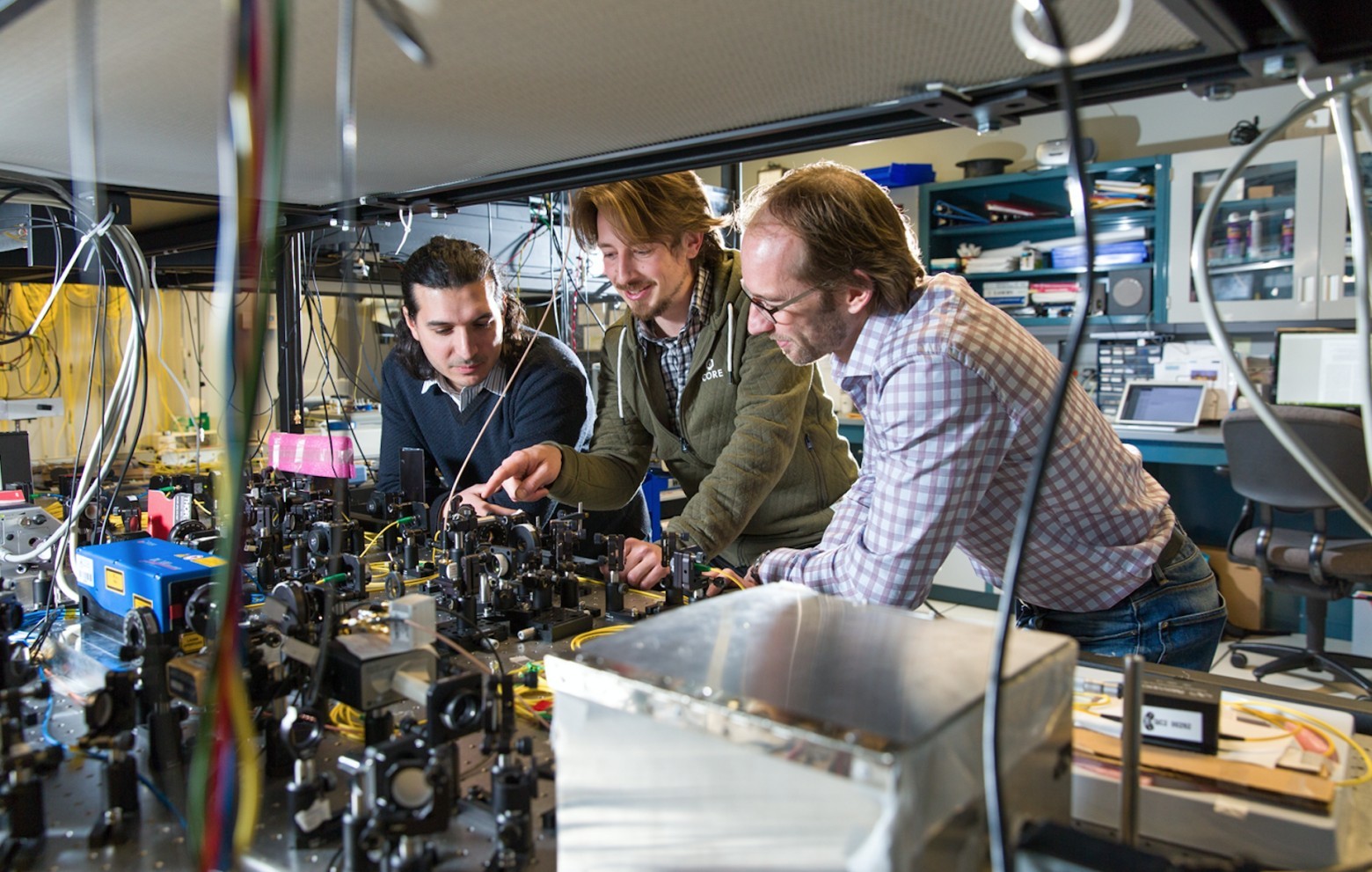
Wolfgang Tittel (right) and his colleagues from the University of Calgary. Photo: University of Calgary
Wolfgang Tittel and colleagues from the University of Calgary were able to increase the distance between the mediator and the recipient to 6.2 km in a straight line ( scientific work , doi: 10.1038 / nphoton.2016.180). The Calgary map shows the fiber channel that was being transmitted. The length of the channel between the mediator and the recipient is 11.1 km.
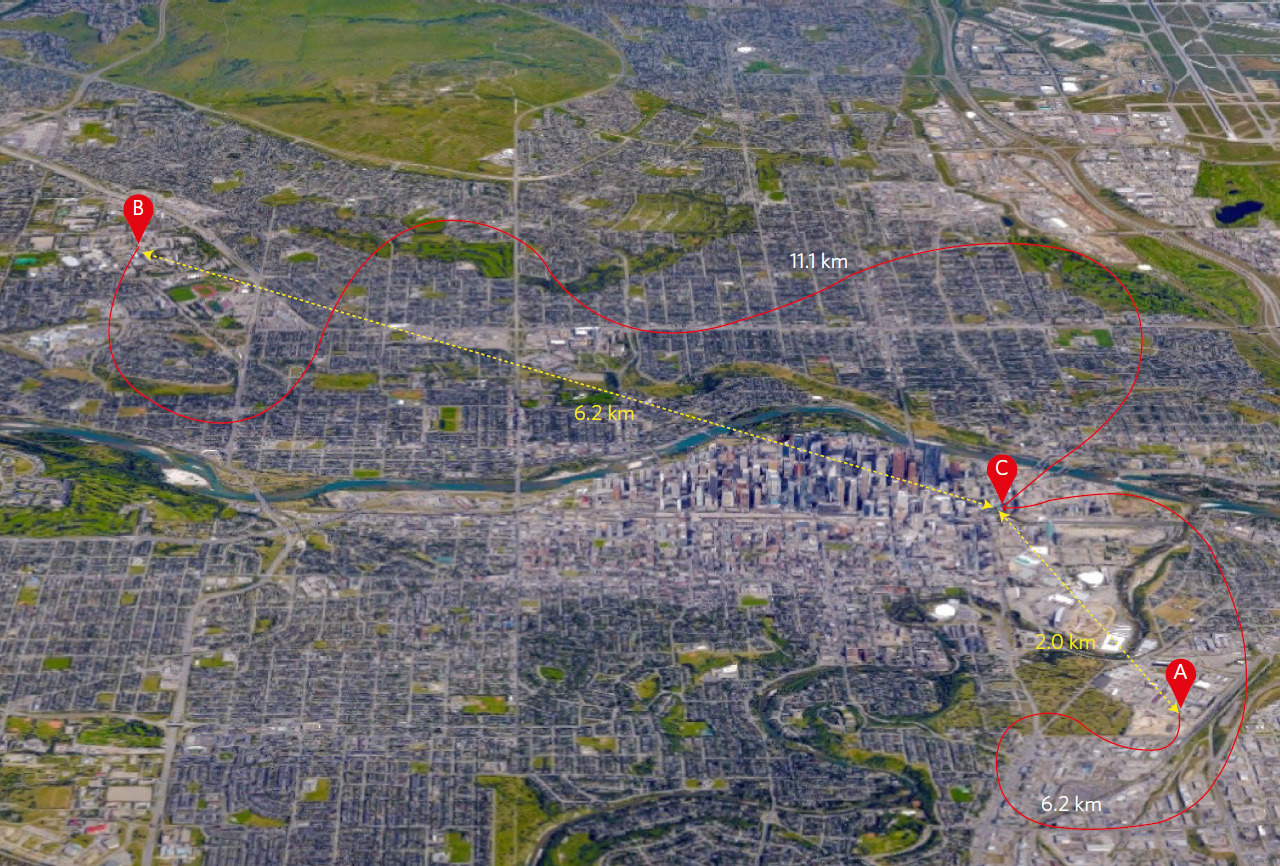
A - the sender, B - the recipient, C - the intermediary. Illustration: University of Calgary. Map: Google
A diagram of the University of Calgary experimental setup is shown below.
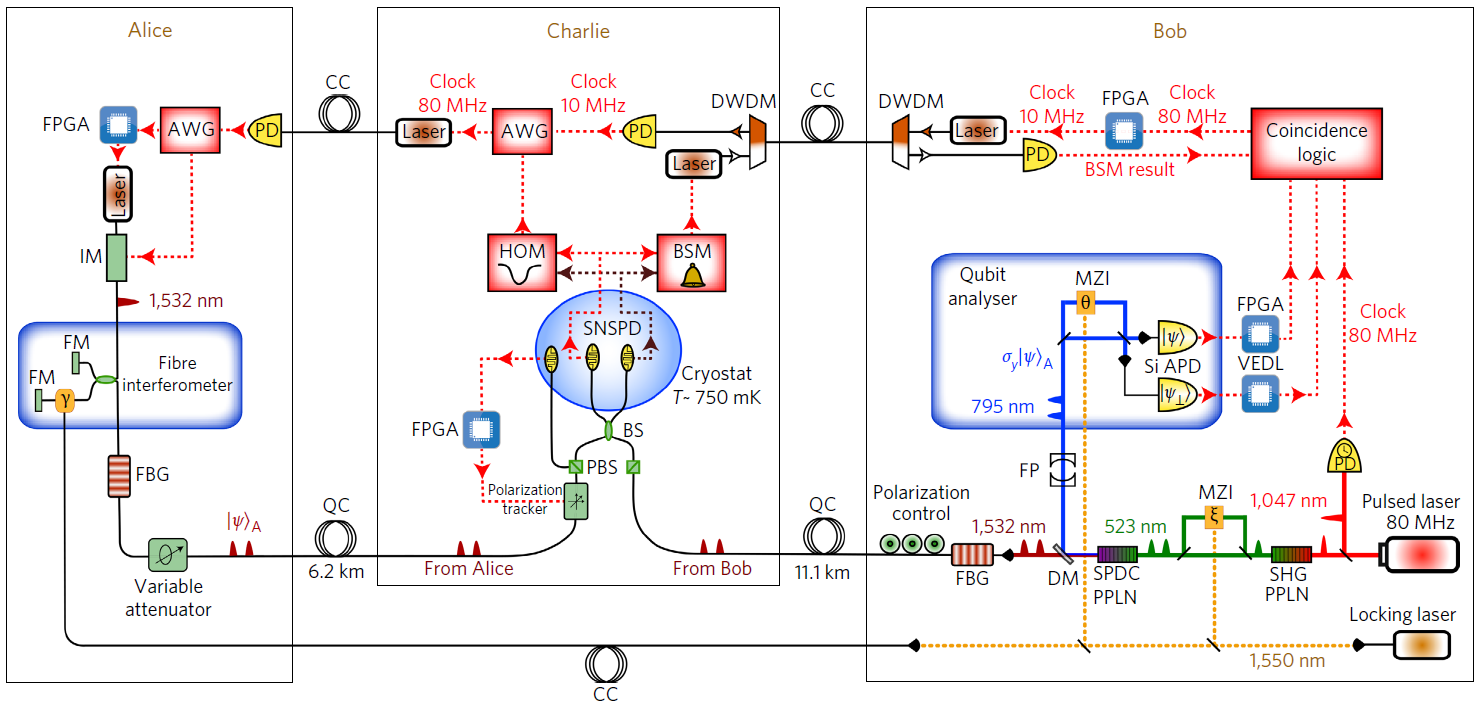
As can be seen on the map, the distance in a straight line of 6.2 km covers a large part of a large city. Canadian physicists managed to achieve a transfer rate of 17 photons per second, that is, the exchange of simple cryptographic keys will take quite a long time.
Colleagues from the Scientific and Technical University of China went even further and transmitted entangled photons between the recipient and intermediary in a 30 km fiber optic quantum network at a distance of 12.5 km ( scientific work , doi: 10.1038 / nphoton.2016.179).
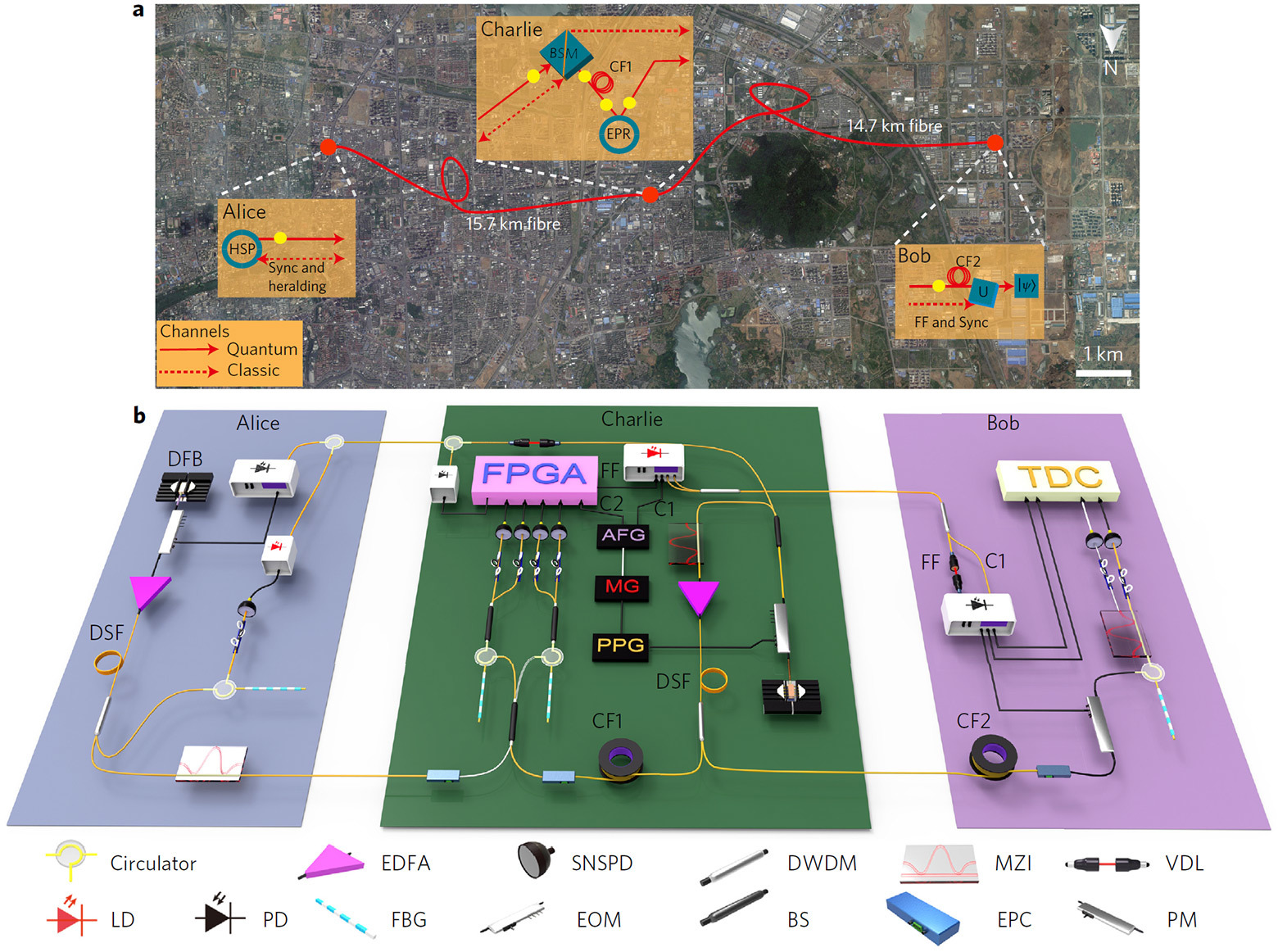
The Chinese system has a slightly different configuration: here a pair of connected photons is created by the intermediary and sends one of the photons to the receiver, and not vice versa. This scheme is more suitable for a star-shaped network topology, that is, for network deployment in the city.
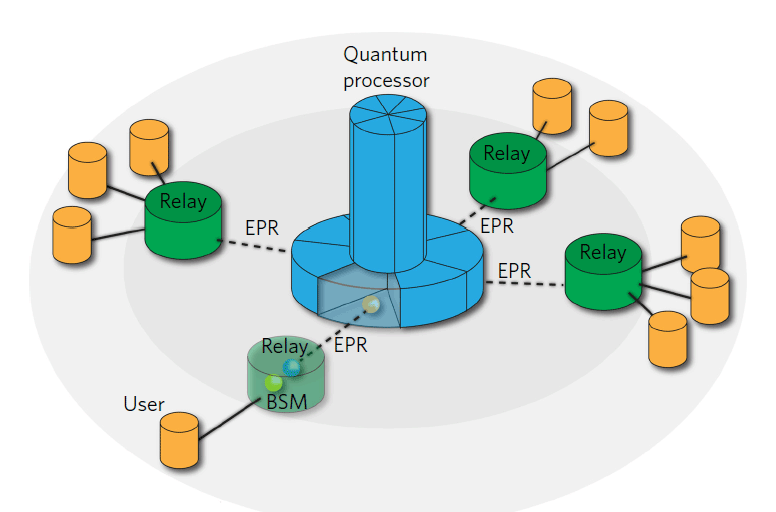
Based on the transmission distance, it is now theoretically possible to create a quantum teleportation network with a single hub in the geographical center of the city.
On the other hand, the Canadian quantum network architecture is more suitable for laying quantum channels between cities, with a series of repeaters on a long channel.
Quantum teleportation is reliably protected from wiretapping and interception systems that intelligence organizations and governments of different countries are deploying on the Internet to spy on their own and other citizens. Interception of secret keys for quantum end-to-end encryption is virtually impossible, because it violates the laws of physics.
Source: https://habr.com/ru/post/372693/
All Articles